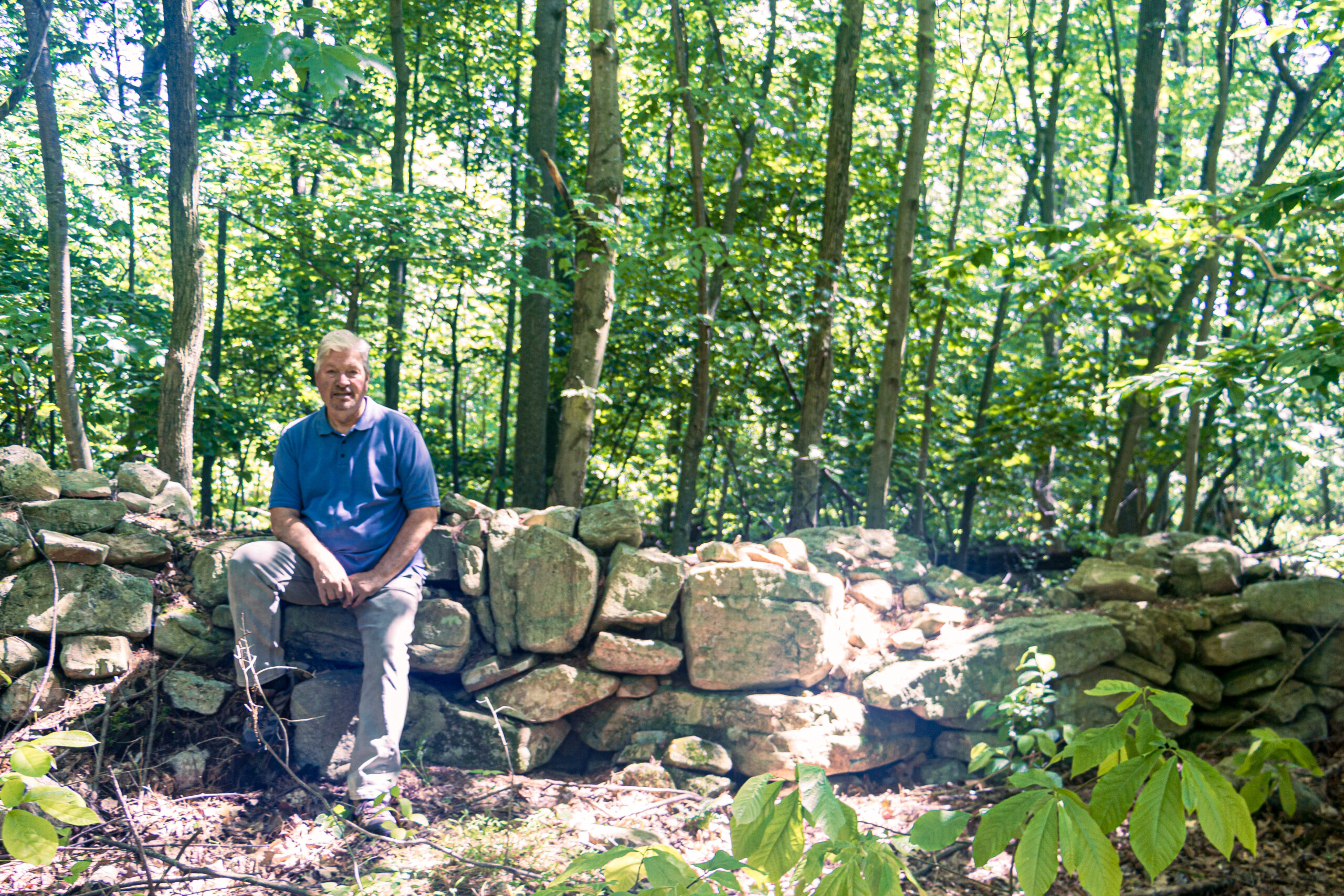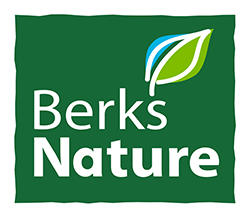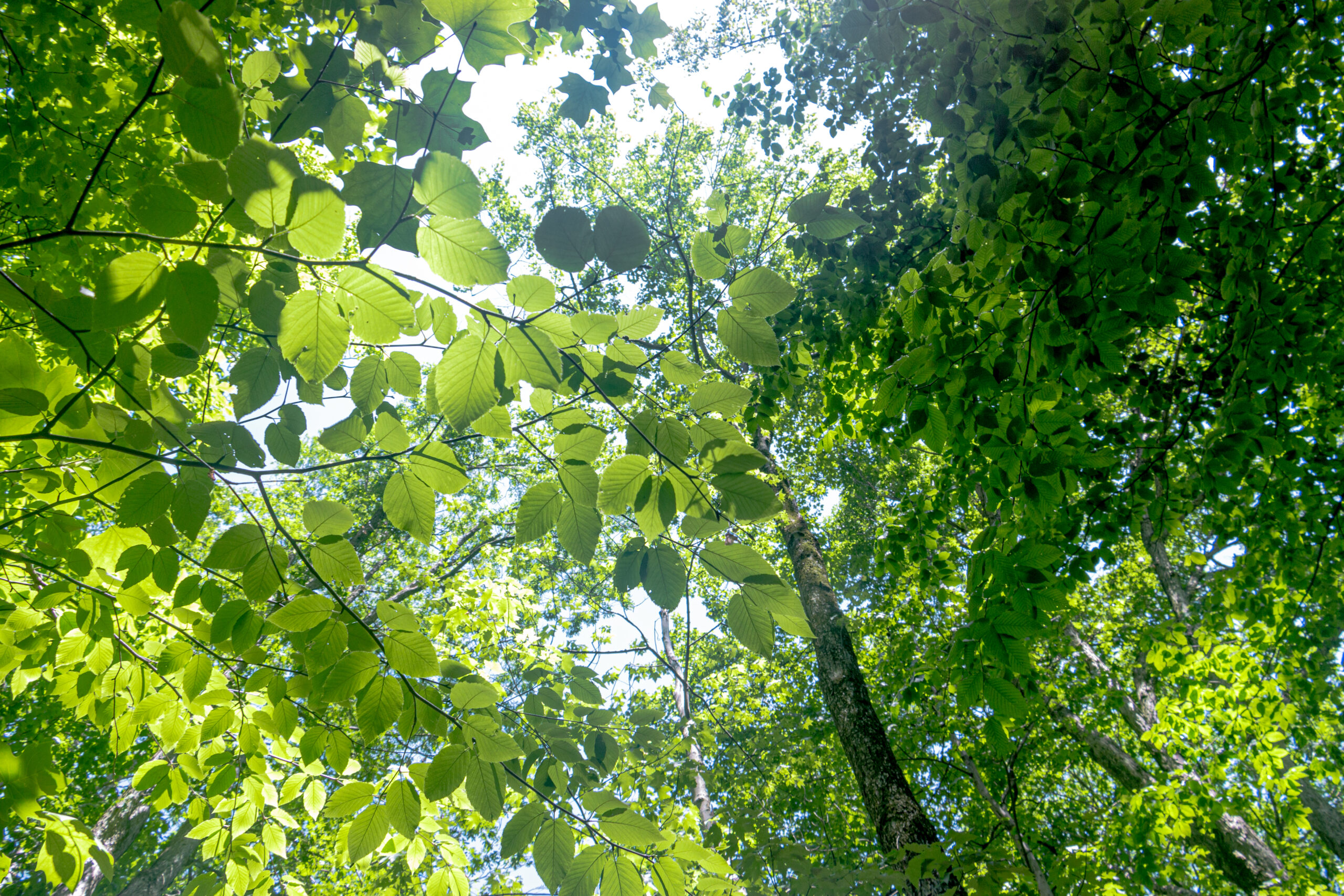It started simply, with a question:
“Who owns these woods?” as a young man, Kevin Stein asked his father, Lee Stein.
Unbeknownst to Kevin, this innocent question would set in motion what became a 26-year-long providence to fulfill Kevin’s childhood dream: to own and protect the Blue Mountain, preserving its environment – the land and the wildlife – forever.
The woodlands of Blue Mountain, also known as the Kittatinny Ridge, form a critical link in an unbroken chain of forested mountains within the 1,500-mile-long Appalachian Mountain Range. In Pennsylvania, the Blue Mountain stretches for 185 rugged miles and is one of the most diverse habitats and climate resilient landscapes in the Commonwealth.
To Kevin, the woods were God’s playground, growing thick and green across his childhood home in Bethel Township. These woods and their denizens – the agile deer, gobbling turkeys, and chorus of wood frogs – were a wonder to Kevin.
In Kevin’s own words, “It was truly a thrill and gratifying to experience God’s playground.”
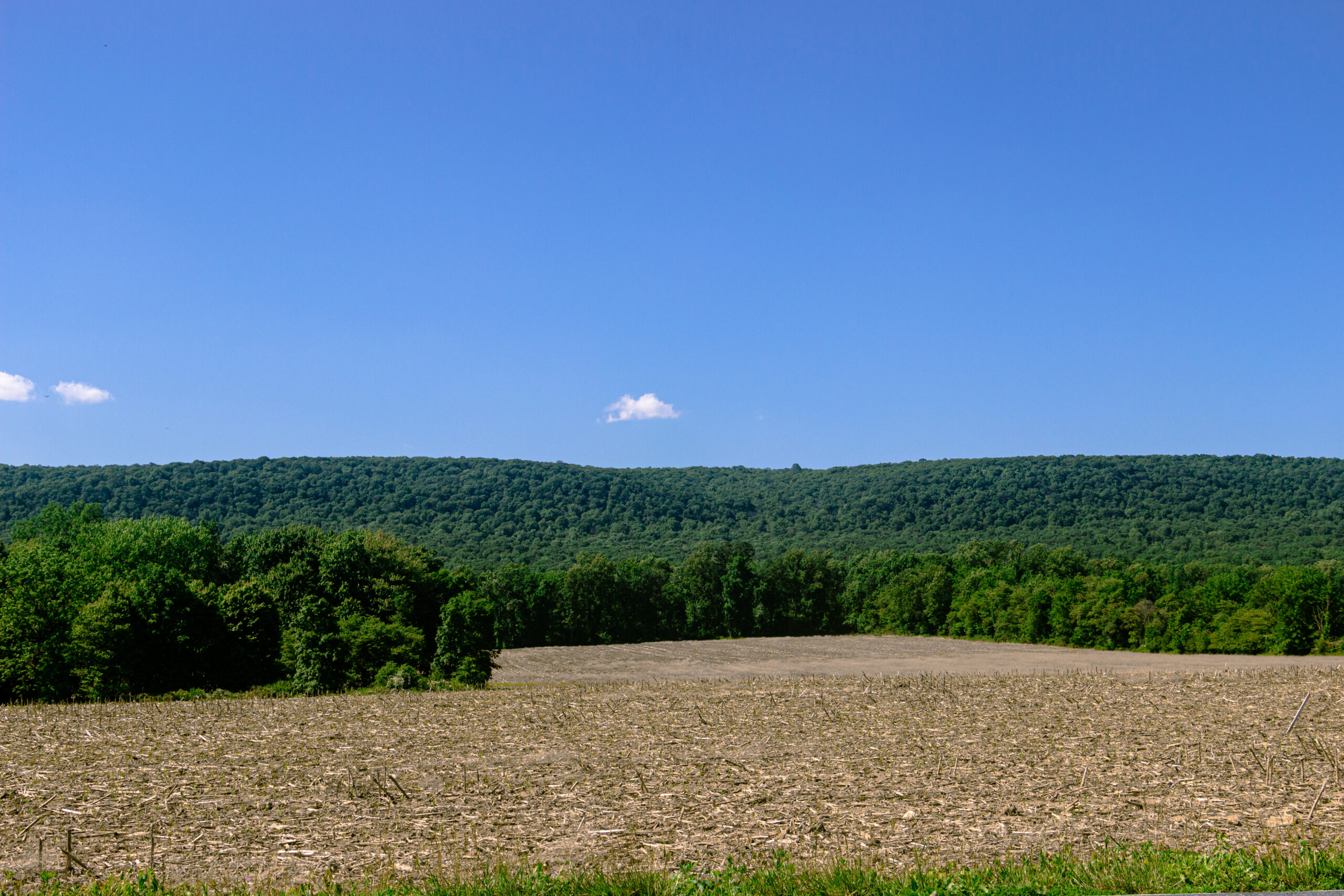
View of the Kittatinny Ridge in Bethel Township.
But historically this inspiring mountain has not always been treated so kindly.
Well before Kevin’s parents purchased their farm in 1954, much of the Blue Mountain belonged to Taylor Forge who deforested large swaths of the wooded slopes to make charcoal.
With the trees gone, Taylor Forge moved its operations elsewhere and began to divest the land they had spent and spoilt. To make the most of this land sale, a surveyor subdivided the deforested mountain into long, narrow parcels; naught but 30 yards wide in some cases but reaching thousands of yards long.
Unfortunately, many people didn’t know they were buying an impractically long rectangle. But this is how the Blue Mountain was sold and its ownership scattered.
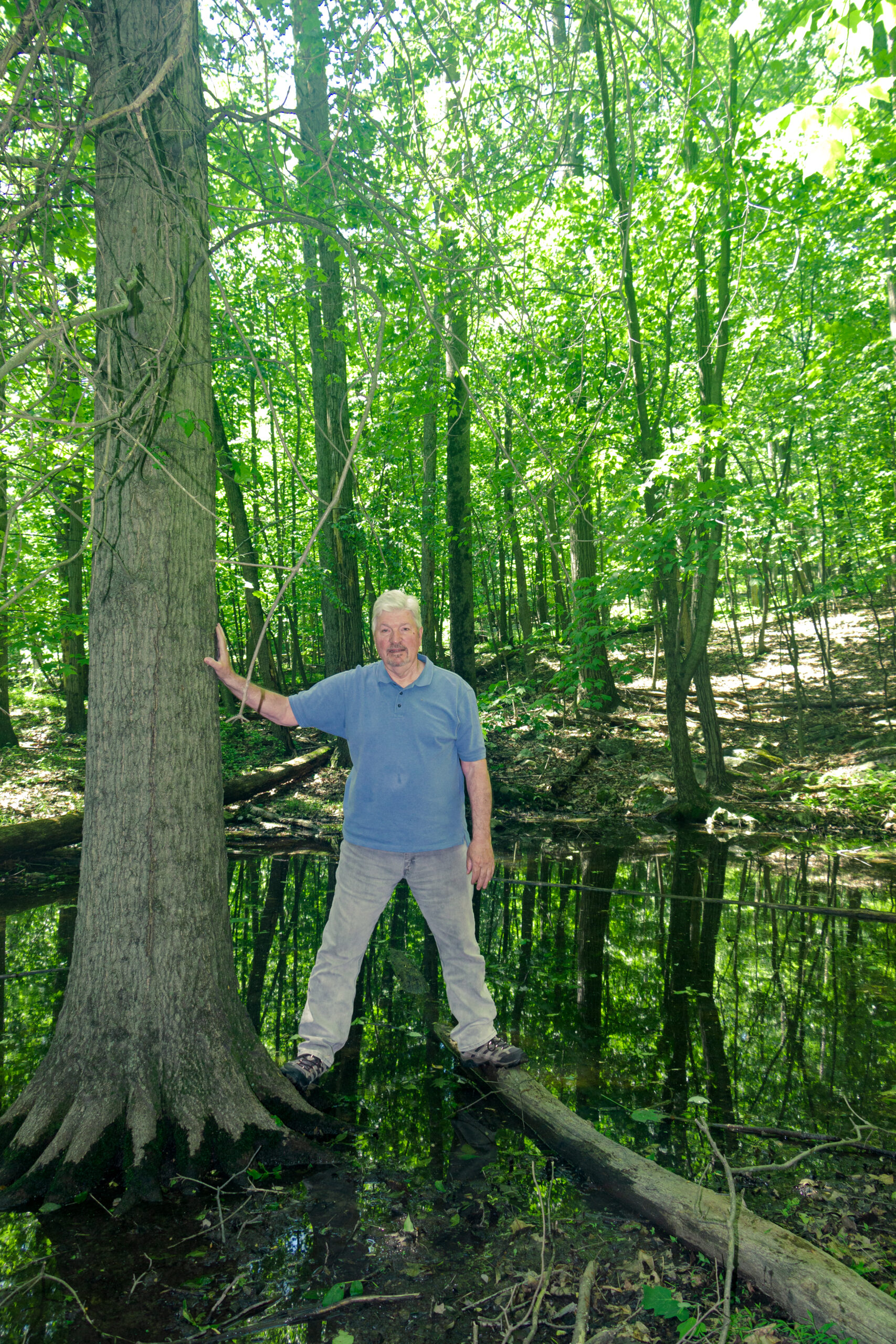
Kevin Stein stands alongside a vernal pool sheltered in the woodlands of his recently preserved property.
Many, many years later, the question remained: who now owned the mountain?
Kevin, a draftsman by trade, collected deeds from the Berks County Courthouse to plot, as best he could with the limited information available. He developed a crude map of the mountain’s ownership and then sought out his father’s local knowledge. This was Kevin’s first attempt at figuring out who owned the mountain’s parcels.
Kevin and his father reviewed this map together, asking over and over, “Who owns these woods?” and over and over again realizing that they did not know.
A lawyer offered Kevin and his father the first part of the answer they sought; the truth was, in many cases, the land had no recent owner and had been taken off the tax records. Kevin learned that he could acquire these unclaimed properties by applying for a quiet title.
A quiet title action is a legal proceeding used to determine a property’s ownership. Kevin filed an action to quiet title, asserting a claim of ownership, and then waited for anyone to come forth and claim the property. When no challengers stepped forward, Kevin became the rightful owner of the parcel.
In 1996, Kevin acquired two properties this way, totaling 19 acres between them.
Although condemnation by quiet title is a practice that has often been utilized to the detriment of local conservation, Kevin’s faith led him to use this tool for the greater good of the land, rather than abuse it.
After hours upon hours spent at the Berks County Courthouse sifting through deeds, Kevin befriended a mapper who worked for the County. The Taylor Forge parcels, those long strips of land, lost from any active consciousness of ownership, were often the subject of the County mapper’s inquiries. When such a parcel fell within Kevin’s slice of Blue Mountain, the County mapper brought them to Kevin’s attention.
When an owner for these properties could be found, Kevin approached the newfound owners with a proposal. In almost every case, they agreed to sell the land. In fact, in most cases they didn’t even know where the property was, but Kevin did.
When no living owner or family member could be found, these properties were designated for tax sale. Kevin acquired several parcels in this manner as well, sitting in the County Courthouse auditorium, bidding, fairly uncontested, on long-forgotten lands; forgotten but now recovered and in good hands.
Kevin’s collecting continued. Some acquisitions took cunning, while others felt more fated.
In the late 1990s, Kevin was visited by a vision in his sleep. The dream instructed him to contact a Blue Mountain neighbor named Richard Piccioni and inquire about his woodland – a trio of adjacent properties which Richard would periodically visit to hunt.
Kevin almost dismissed the dream, ignoring its directive to contact Richard. But when the dream returned six or so months later, Kevin did not ignore this premonition twice.
Soon after the dream’s second calling, Kevin contacted Richard, introduced himself, and asked quite plainly if Richard had any interest in selling his land.
The gift of timing was on Kevin’s side as Richard was indeed looking to generate some extra income for his college-bound son. The sale of Richard’s land was finalized in just a few short weeks.
The last property Kevin obtained was a 6-acre tract willed to him by his mother in 2022, following her death.
Altogether, Kevin gradually assembled and joined 14 individual parcels into one, 139-acre tract of rough, rocky, and beautiful woodlands. After 26 years and a lifetime of dreaming, this prestigious section of Blue Mountain belonged to Kevin Stein.
But these woods are part of something much bigger.
Nestled between PA State Gamelands and another conservation easement held by Berks Nature, Kevin’s woodlands bridge what once was a gap in an otherwise contiguous stretch of protected forest. When it comes to protecting sensitive ecosystems, bigger is better; large, unbroken habitats are often more resilient to disturbance and better support wildlife and other ecosystem services.
The many seeps, springs, and small streams that originate in Kevin’s woods and then gently tumble and trickle across the mountain’s stoney slopes feed into the Little Swatara Creek, a tributary that drains to the Susquehanna River, which is part of the Chesapeake Bay Watershed.
Healthy forests, like the ones rooted across the slopes of Blue Mountain, are the cardinal sentries for watershed health and play a critical role in supplying downstream communities with clean and abundant water.
Twenty-six years. Twenty-six years sifting through deeds, sitting through tax sale auctions, cold-calling neighbors. Twenty-six years of researching, bidding, investing, and collecting. Twenty-six years of faith, courage, and plain old dreaming.
It was time and money well spent; a dream, in Kevin’s mind, that he was uniquely positioned to realize.
“I think that God created me to preserve this land,” Kevin explained, “I believe it now, that the land and anything that God created, is God’s currency. The land that the farmers farm, the trees, the coal and oil that might be in the ground…our natural resources. This is all God’s currency.”


Lush woodlands growing within the Kittatinny Ridge now protected under a conservation easement.
With a wave of emotion flooding his face, Kevin continued, “For me now to own such a large chunk of God’s currency and God’s playground is very humbling and a huge blessing.”
